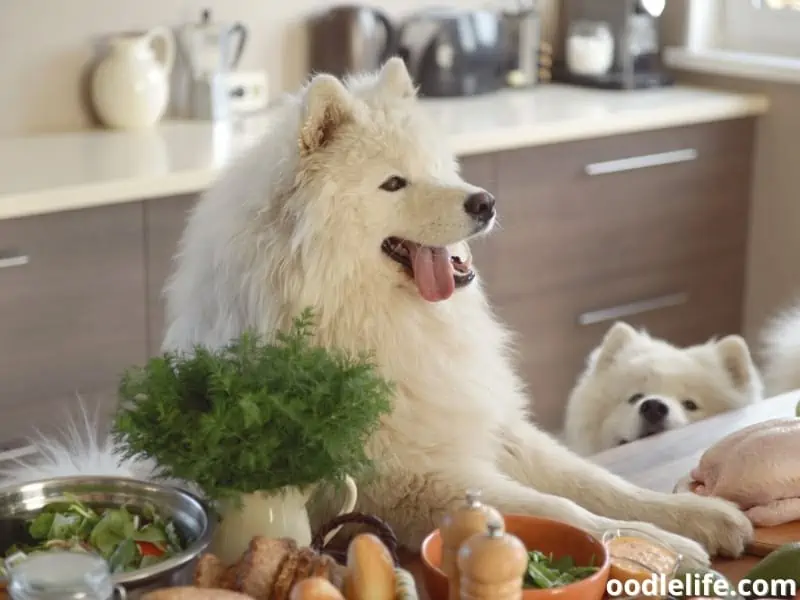How Much Garlic Can Kill a Dog? (Help!)
Ahhh….garlic. One of the most common human foods, it is a frequent addition to many of our dishes. However, garlic is one of those nondescript foods that dogs generally avoid because they somehow might know what is good for them and what isn’t.
In small quantities, garlic isn’t poisonous, especially if you own a large dog. However, large amounts of garlic can be toxic and in worse case scenarios, fatal.
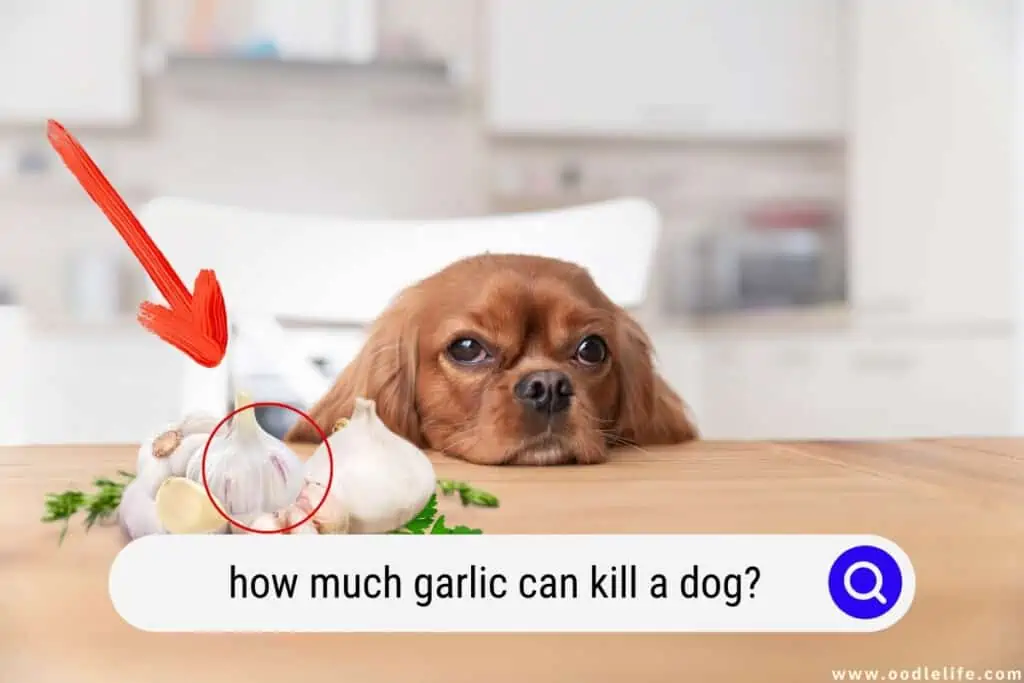
Dogs who consume large amounts of garlic may experience vomiting, diarrhea, abdominal pain, and lethargy. So the next time your pooch longingly stares at you at the dinner table, resist the temptation to share your food with your canine buddy – his digestive system will thank you for it!
What Exactly Is Garlic?
“Let food be thy medicine, and medicine be thy nourishment,” the Greek physician Hippocrates is credited as saying. He began recommending garlic for medical ailments over a thousand years ago.
Garlic’s numerous health benefits have now been confirmed by modern research. It contains several vitamins and minerals, and when taken as a supplement, it can aid in the prevention of illness, the reduction of blood pressure, the reduction of cholesterol, and many other benefits.
While garlic has long been known to be a healthful herb, is it safe for dogs to consume? Some people believe garlic is poisonous to dogs and should not be fed to canines under any circumstances. In tiny amounts, however, it is safe and useful.
So, why do so many people think this herb is poisonous?
Garlic, chives, onions, and leeks all belong to the Allium family. Members of this family contain two troublemaking chemicals – propyl disulfide and thiosulphate.
When excessive amounts of a substance are consumed, oxidation occurs in red blood cells, resulting in “Heinz bodies”, clumps of damaged hemoglobin, which the body rejects. Garlic can cause anemia and possibly death if consumed in big doses over a lengthy period.
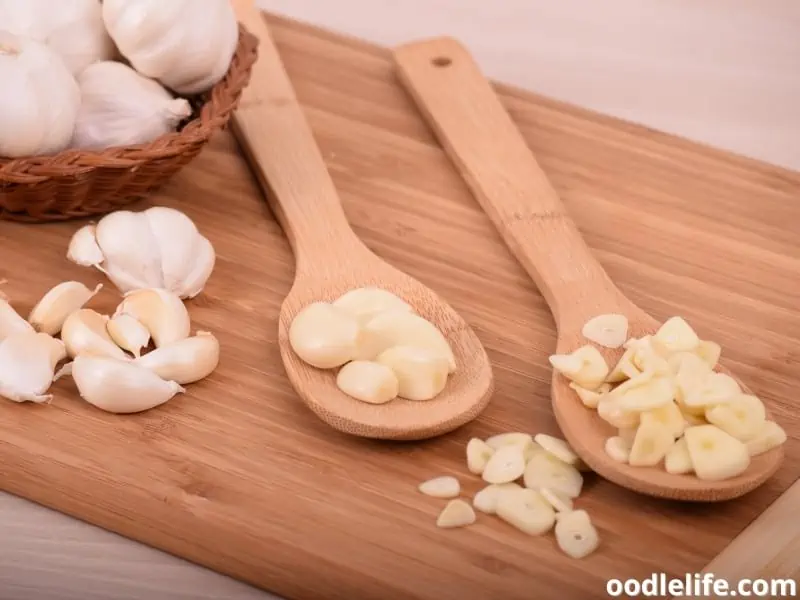
Garlic and Animal History
Wild onions have been fed to grazing animals like horses and sheep since the early 1900s, and these animals have developed symptoms of food toxicity. Testing in the 1930s revealed that dogs eating onions developed poisoning symptoms. Testing in the 1980s revealed similar outcomes for cats.
Is it true that because onions and garlic are from the same family, garlic poisoning symptoms are the same?
A research article published by Hokkaido University in 2000 sparked the majority of the scrutiny and unfavorable attention regarding dogs and garlic. “Thus, meals containing garlic should not be provided to dogs, according to the study’s conclusion. Garlic-induced hemolysis in dogs appears to have centrocytes as a prominent diagnostic characteristic.” according to the study’s conclusion.
However, even something as simple as water can become hazardous if consumed in excess. “Four dogs were administered 1.25 ml of garlic extract per kilogram of body weight (5g of whole garlic per kilogram) intragastrically once a day for seven days,” according to the protocol. A 40-pound dog, for example, would have received 20 garlic cloves – an enormous quantity!
It’s vital to keep in mind the high amount of garlic that was consumed for testing purposes. Anyone would be adversely affected by that much garlic.
Symptoms of Garlic Toxicity
While ingesting small amounts of garlic wouldn’t hurt most dogs, it is important to know the signs of garlic toxicity and get veterinary help if you think your dog managed to eat enough garlic to be a problem.
Some symptoms include:
- Rapid breathing
- Weakness and lethargy
- Jaundice
- Vomiting
- Diarrhea
- Appetite loss
- Abdominal pain
Treatment for a garlic overdose includes supportive care like intravenous fluids or an anti-vomiting medication. In serious cases, a blood transfusion might have to be done.

Garlic Doses That Are Safe For Dogs
Studies show that it takes 15 to 30 grams of garlic per kilogram of body weight are required to cause detrimental effects in a dog’s blood.
Since an average clove of garlic is between 3 and 7 grams, the amount needed to make your dog really sick is massive!
This roughly equates to an 85 lb Labrador Retriever consuming 152 garlic cloves before being poisonous, and that’s an awful lot of garlic!
Some “safe” consumption levels for dogs are:
- 100 pounds : 3 cloves
- 70-90 pounds 2 1/2 cloves
- 40-70 pounds: 2 cloves
- 15 to 40 lbs. : 1 clove
- 10 to 15 lbs. : 1/2 clove
Remember that cloves might be anywhere from 3 and 7 grams, and your dog’s tolerance to garlic also depends on other factors such as health, age, physical condition, and metabolism.
What Is the Lethal Garlic Dose for Dogs?
Garlic at 15 to 30 grams per kilogram of body weight has been demonstrated to be potentially fatal to dogs in studies.
Larger dogs, on the other hand, are less affected by garlic and can tolerate a bigger dose. In contrast, a 10 lb toy dog can suffer disastrous symptoms even after consuming as little as 10 cloves.
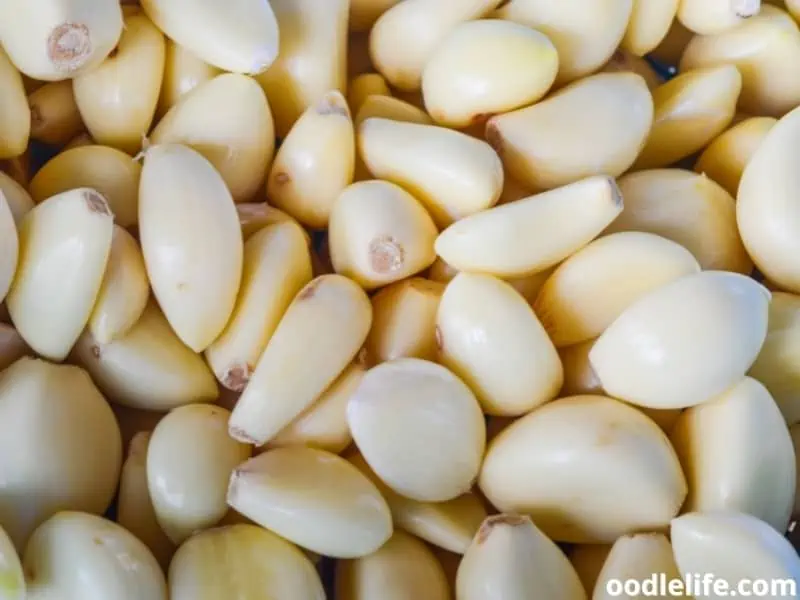
What Is the Effect of Thiosulfate on Dogs?
Thiosulfate is a salt that contains sulfur and oxygen atoms. It’s often used as a reagent in chemical reactions, and it can also be found in some natural sources, such as hot springs. Its chemical formula is S2O3-2.
Thiosulfate is a colorless compound that is soluble in water, decomposing into sulfur dioxide and sulfate when exposed to heat.
Thiosulfate can cause red blood cells (RBC) to oxidize. Red blood cells are hemolyzed as a result of this condition, which simply said, means red cells break down faster than they are formed. This is a major problem because RBCs are crucial for carrying oxygen to all regions of the body.
Garlic poisoning in dogs causes anemia and a lack of red blood cells in the body. Diarrhea, vomiting, abdominal pain, sadness, dehydration, and loss of appetite are all symptoms of this illness.
If your dog has eaten garlic and is experiencing symptoms of garlic toxicity, you should seek medical help right once. Increased hydration, medicines, and even a blood transfusion are all common treatments for such situations.

When Should Your Dog Avoid Garlic?
Garlic should be avoided in the following situations:
- Your dog is scheduled for surgery shortly.
- Your dog is on medication or has a medical condition.
- Your puppy is under the age of eight weeks as red blood cells are still forming during this time.
- If your dog despises the taste of garlic and tries to avoid it, don’t try to feed it to him as a supplement.
- If your dog has an autoimmune condition such as canine lupus, a rare, serious disease that causes your dog’s own immune system to attack the tissues and organs.

Garlic as a Dietary Supplement in Dogs
Giving low amounts of garlic to your fur babies can be healthy with a variety of positive effects, though this has yet to be scientifically confirmed. Here are a few of the advantages of giving your dog tiny amounts of garlic:
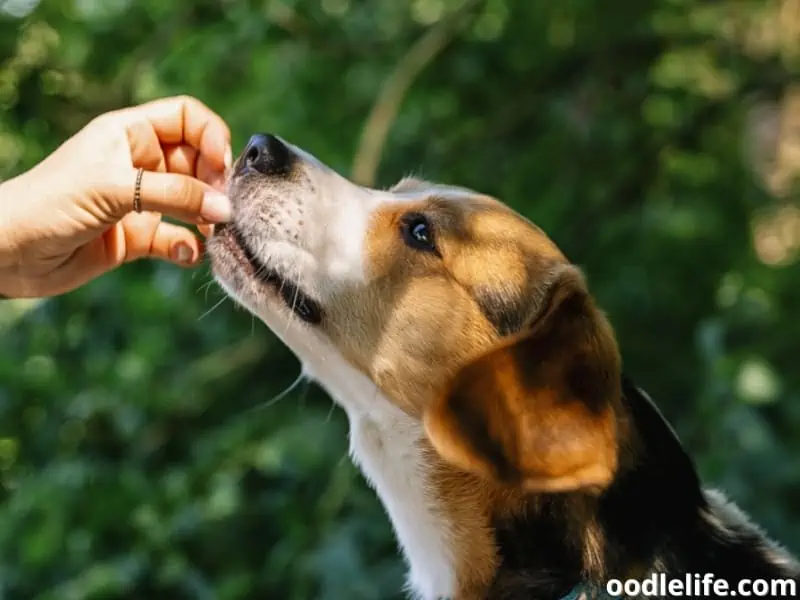
Detoxifies the Liver
Garlic is claimed to contain properties that aid in the breakdown and elimination of dangerous poisonous substances from the body by the liver. Garlic is an excellent way to boost liver function and improve overall health.
Booster for Immunity
Garlic is said to have anti-cancer qualities in animals as well as humans. This aids in the prevention of a possibly fatal condition that could hit your dog in the old life. A rich source of antioxidants, the healing properties of garlic help protect against cell damage and reduce the risk of oxidative stress.
Lowers Cholesterol
Small quantities of garlic consumed over time can be good for your four-legged friend in the long run. It can help to enhance and lower blood cholesterol levels, strengthening their hearts and help them live longer!
Lowers Blood Pressure
One way that garlic acts is by helping to relax the smooth muscles in the walls of blood vessels, which in turn lowers the resistance to blood flow and makes it easier for the heart to pump blood.
Reduces Inflammation
Studies have shown that garlic can help to inhibit the production of inflammatory compounds in the body. Additionally, garlic is a rich source of antioxidants, which can help to protect cells from damage caused by inflammation.
Anti-Bug
Ticks and fleas, two common dog pests, despise garlic! Garlic can help your dog get rid of these troublesome bugs without requiring too much effort or pharmacological assistance.
Garlic For Your Dog… Yes or No?
On both sides of the debate, there are numerous credible sources. If you’re thinking about adding garlic or other supplements to your dog’s food, always talk to your veterinarian first.
Your veterinarian can assist you in determining the proper dosages as well as preventative strategies and treatment.
Final Thoughts
So, is garlic poisonous to dogs? The answer is a little complicated. In small doses, garlic can be beneficial to your furry friend’s health, but in large doses, it can be harmful.
It’s always best to consult with your veterinarian before giving your dog any new food or supplement, including garlic.
